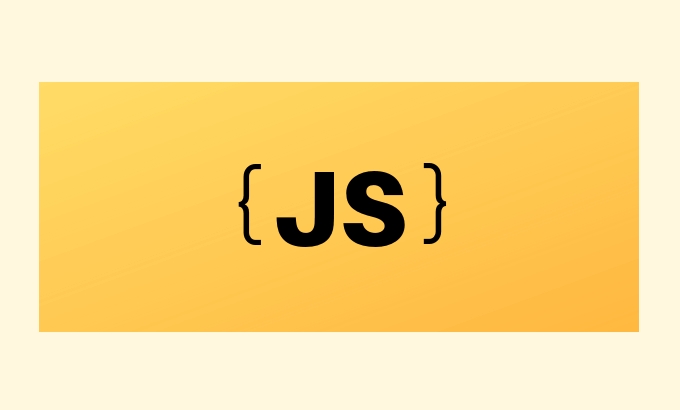Understanding the JavaScript Template Method Pattern
Jul 19, 2025 am 12:03 AMThe template method pattern is a behavioral design pattern that defines an algorithm framework in the base class and delays specific steps to the subclass implementation. It enhances code reuse and structural clarity by encapsulating fixed processes and allowing local customization. 1. The core idea is to define the algorithm skeleton and delay some steps to subclasses; 2. Define template methods and steps through parent classes in JavaScript, and subclasses inherit and rewrite specific methods to implement; 3. Applicable scenarios include multiple subclasses sharing logic but different details, keeping the algorithm structure stable and requiring flexible changes; 4. When using it, pay attention to avoid excessive dependence on inheritance, ensuring that the step naming is clear, and non-abstract steps can be directly implemented in the parent class, and beware of the runtime risks brought by JS lacking interface support.

The Template Method Pattern in JavaScript is a behavioral design pattern that defines the skeleton of an algorithm but delays some steps to implementation in a subclass. This pattern is very useful when dealing with scenarios that require shared logic but allow partial customization.

What is template method pattern?
The core idea of template methods is: define a method framework in a base class, and hand over some specific steps to subclasses to implement. This allows different subclasses to provide different implementation details without changing the algorithm structure.
To give a simple example: you have a "cooking" process that includes preparing ingredients, cooking and placing dishes. Among them, "preparing ingredients" and "placing dishes" may be different for each dish, but the entire process is fixed. At this time, you can use the template method to encapsulate this process.

How to implement template methods in JavaScript?
JavaScript is a dynamic language that does not have a strict class structure like Java, but this does not prevent us from using template method patterns. The usual practice is:
- Define a parent class that contains a main method (i.e. template method) that calls multiple step methods
- Some of the step methods are default implementations, and some are "abstract" (can be understood as throwing errors or empty functions in JS)
- Subclasses inherit the parent class and override the steps that require customization
class Meal {
prepare() {
this.gatherIngredients();
this.cook();
this.present();
}
gatherIngredients() {
throw new Error('GatherIngredients method must be implemented');
}
cook() {
console.log('Cooking...');
}
present() {
console.log('Collection is completed');
}
}
class Salad extends Meal {
gatherIngredients() {
console.log('vegetables and sauces needed to prepare salad');
}
} In this example, prepare is the template method, which defines the overall process of cooking, and gatherIngredients is the part that the subclass must implement.

Which scenarios are suitable for using templates?
The template method is suitable for the following situations:
- Multiple subclasses have common behavior, but different details
- The overall structure of the algorithm is stable, but some steps require flexible changes
- You want to avoid duplicate code in subclasses while still wanting to be scalable
Common application scenarios include:
- Initialization process of UI components
- Data processing pipelines (such as loading, conversion, display)
- Different types of report generators
For example, when you develop a chart library, all charts require the steps of "get data → rendering → add interaction", but the data processing method of each chart is different, so the template method comes in handy.
What should I pay attention to when using template methods?
Although the template method is practical, there are some things that are easy to ignore when using:
- Don't over-rely rely on inheritance : If too much logic is placed in the parent class, it will make subclasses difficult to understand and maintain
- Naming should be clear : each step in the template method should have clear meaning, otherwise others will be confused when reading the code.
- Not all steps need to be abstracted : some general operations can be implemented directly in the parent class, such as log output, error handling, etc.
In addition, JavaScript lacks native interface support, so if a method is not implemented in the parent class but is called in the template, an error will be reported at runtime, which may pose a potential risk.
Basically that's it. The template method pattern is a lightweight but effective way to organize structures, especially suitable for those "largely consistent, locally different" tasks. Using it well can improve code reuse rate and make the structure clearer.
The above is the detailed content of Understanding the JavaScript Template Method Pattern. For more information, please follow other related articles on the PHP Chinese website!

Hot AI Tools

Undress AI Tool
Undress images for free

Undresser.AI Undress
AI-powered app for creating realistic nude photos

AI Clothes Remover
Online AI tool for removing clothes from photos.

Clothoff.io
AI clothes remover

Video Face Swap
Swap faces in any video effortlessly with our completely free AI face swap tool!

Hot Article

Hot Tools

Notepad++7.3.1
Easy-to-use and free code editor

SublimeText3 Chinese version
Chinese version, very easy to use

Zend Studio 13.0.1
Powerful PHP integrated development environment

Dreamweaver CS6
Visual web development tools

SublimeText3 Mac version
God-level code editing software (SublimeText3)
 How to make an HTTP request in Node.js?
Jul 13, 2025 am 02:18 AM
How to make an HTTP request in Node.js?
Jul 13, 2025 am 02:18 AM
There are three common ways to initiate HTTP requests in Node.js: use built-in modules, axios, and node-fetch. 1. Use the built-in http/https module without dependencies, which is suitable for basic scenarios, but requires manual processing of data stitching and error monitoring, such as using https.get() to obtain data or send POST requests through .write(); 2.axios is a third-party library based on Promise. It has concise syntax and powerful functions, supports async/await, automatic JSON conversion, interceptor, etc. It is recommended to simplify asynchronous request operations; 3.node-fetch provides a style similar to browser fetch, based on Promise and simple syntax
 JavaScript Data Types: Primitive vs Reference
Jul 13, 2025 am 02:43 AM
JavaScript Data Types: Primitive vs Reference
Jul 13, 2025 am 02:43 AM
JavaScript data types are divided into primitive types and reference types. Primitive types include string, number, boolean, null, undefined, and symbol. The values are immutable and copies are copied when assigning values, so they do not affect each other; reference types such as objects, arrays and functions store memory addresses, and variables pointing to the same object will affect each other. Typeof and instanceof can be used to determine types, but pay attention to the historical issues of typeofnull. Understanding these two types of differences can help write more stable and reliable code.
 JavaScript time object, someone builds an eactexe, faster website on Google Chrome, etc.
Jul 08, 2025 pm 02:27 PM
JavaScript time object, someone builds an eactexe, faster website on Google Chrome, etc.
Jul 08, 2025 pm 02:27 PM
Hello, JavaScript developers! Welcome to this week's JavaScript news! This week we will focus on: Oracle's trademark dispute with Deno, new JavaScript time objects are supported by browsers, Google Chrome updates, and some powerful developer tools. Let's get started! Oracle's trademark dispute with Deno Oracle's attempt to register a "JavaScript" trademark has caused controversy. Ryan Dahl, the creator of Node.js and Deno, has filed a petition to cancel the trademark, and he believes that JavaScript is an open standard and should not be used by Oracle
 What is the cache API and how is it used with Service Workers?
Jul 08, 2025 am 02:43 AM
What is the cache API and how is it used with Service Workers?
Jul 08, 2025 am 02:43 AM
CacheAPI is a tool provided by the browser to cache network requests, which is often used in conjunction with ServiceWorker to improve website performance and offline experience. 1. It allows developers to manually store resources such as scripts, style sheets, pictures, etc.; 2. It can match cache responses according to requests; 3. It supports deleting specific caches or clearing the entire cache; 4. It can implement cache priority or network priority strategies through ServiceWorker listening to fetch events; 5. It is often used for offline support, speed up repeated access speed, preloading key resources and background update content; 6. When using it, you need to pay attention to cache version control, storage restrictions and the difference from HTTP caching mechanism.
 Handling Promises: Chaining, Error Handling, and Promise Combinators in JavaScript
Jul 08, 2025 am 02:40 AM
Handling Promises: Chaining, Error Handling, and Promise Combinators in JavaScript
Jul 08, 2025 am 02:40 AM
Promise is the core mechanism for handling asynchronous operations in JavaScript. Understanding chain calls, error handling and combiners is the key to mastering their applications. 1. The chain call returns a new Promise through .then() to realize asynchronous process concatenation. Each .then() receives the previous result and can return a value or a Promise; 2. Error handling should use .catch() to catch exceptions to avoid silent failures, and can return the default value in catch to continue the process; 3. Combinators such as Promise.all() (successfully successful only after all success), Promise.race() (the first completion is returned) and Promise.allSettled() (waiting for all completions)
 Leveraging Array.prototype Methods for Data Manipulation in JavaScript
Jul 06, 2025 am 02:36 AM
Leveraging Array.prototype Methods for Data Manipulation in JavaScript
Jul 06, 2025 am 02:36 AM
JavaScript array built-in methods such as .map(), .filter() and .reduce() can simplify data processing; 1) .map() is used to convert elements one to one to generate new arrays; 2) .filter() is used to filter elements by condition; 3) .reduce() is used to aggregate data as a single value; misuse should be avoided when used, resulting in side effects or performance problems.
 JS roundup: a deep dive into the JavaScript event loop
Jul 08, 2025 am 02:24 AM
JS roundup: a deep dive into the JavaScript event loop
Jul 08, 2025 am 02:24 AM
JavaScript's event loop manages asynchronous operations by coordinating call stacks, WebAPIs, and task queues. 1. The call stack executes synchronous code, and when encountering asynchronous tasks, it is handed over to WebAPI for processing; 2. After the WebAPI completes the task in the background, it puts the callback into the corresponding queue (macro task or micro task); 3. The event loop checks whether the call stack is empty. If it is empty, the callback is taken out from the queue and pushed into the call stack for execution; 4. Micro tasks (such as Promise.then) take precedence over macro tasks (such as setTimeout); 5. Understanding the event loop helps to avoid blocking the main thread and optimize the code execution order.
 Understanding Event Bubbling and Capturing in JavaScript DOM events
Jul 08, 2025 am 02:36 AM
Understanding Event Bubbling and Capturing in JavaScript DOM events
Jul 08, 2025 am 02:36 AM
Event bubbles propagate from the target element outward to the ancestor node, while event capture propagates from the outer layer inward to the target element. 1. Event bubbles: After clicking the child element, the event triggers the listener of the parent element upwards in turn. For example, after clicking the button, it outputs Childclicked first, and then Parentclicked. 2. Event capture: Set the third parameter to true, so that the listener is executed in the capture stage, such as triggering the capture listener of the parent element before clicking the button. 3. Practical uses include unified management of child element events, interception preprocessing and performance optimization. 4. The DOM event stream is divided into three stages: capture, target and bubble, and the default listener is executed in the bubble stage.






